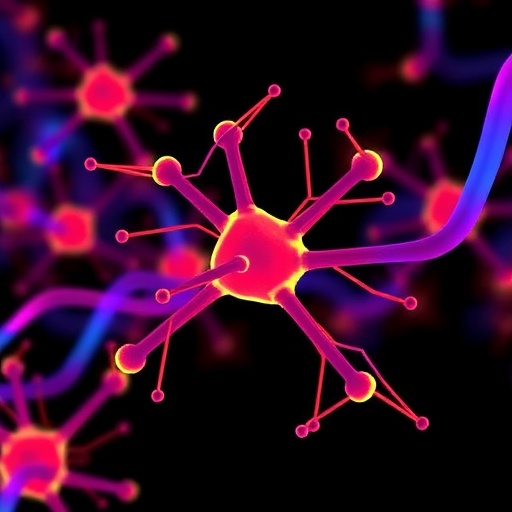In the intricate landscape of mental health disorders, insomnia and alcohol dependence stand as two of the most pervasive and interlinked challenges confronting healthcare professionals worldwide. Recent research has begun to peel back the layers of these conditions, aiming to understand not only their clinical presentation but also how patients themselves perceive the root causes of their afflictions. A groundbreaking qualitative study by Zhabenko, Lall, Linskiy, and colleagues offers a profound glimpse into the lived experiences of individuals grappling with both insomnia and alcohol dependence. Published in the International Journal of Mental Health and Addiction in 2025, this research harnesses patient narratives to decode the complex interplay between sleep disruption and substance use, shedding light on mechanisms underlying these disorders that have remained elusive to solely quantitative approaches.
The study is notable for its emphasis on qualitative data, diverging from traditional epidemiological studies that rely heavily on statistical measures. By engaging directly with patients through in-depth interviews, the researchers extracted rich, nuanced insights into how individuals interpret and rationalize their symptoms and behaviors. This method unveiled a spectrum of perceived causal pathways linking insomnia with alcohol use, underscoring the multifactorial nature of these conditions. The patient-centered perspective challenges conventional biomedical models that often prioritize neurochemical explanations, instead highlighting psychosocial and contextual factors as crucial components in the disease process.
One of the central findings is the recognition of alcohol as both a self-medicating agent and a perpetuator of insomnia. Patients frequently reported initiating or escalating alcohol use to cope with difficulties falling or staying asleep, conceptualizing alcohol as a short-term remedy to restore restfulness. However, many narratives revealed a vicious cycle where alcohol consumption, while initially sedative, ultimately exacerbates sleep disturbances, contributing to greater dependence. This paradoxical effect emphasizes the bidirectional relationship between alcohol and sleep, a dynamic that complicates treatment strategies. Understanding this feedback loop from the patient viewpoint can inform more empathetic and tailored therapeutic interventions.
In addition, patients identified a variety of psychosocial stressors as antecedents to both insomnia and alcohol use. Factors such as workplace pressure, familial conflict, economic insecurity, and social isolation were recurrent themes. These stressors often triggered episodes of acute insomnia, prompting individuals to resort to alcohol as a maladaptive coping mechanism. The qualitative approach vividly maps these contextual stressors onto the progression of sleep and substance use disorders, reinforcing the need for holistic models of care that extend beyond pharmacological management to include psychosocial support.
Emerging from the study is a striking divergence in illness narratives based on demographic and cultural backgrounds. Some participants described insomnia primarily in physiological terms, attributing it to disrupted circadian rhythms or medical conditions, while others emphasized emotional and psychological turmoil. Similarly, cultural attitudes toward alcohol shaped how patients narrated their dependence, with some viewing it through lenses of shame and secrecy, whereas others normalized its consumption as part of social rituals. These findings highlight the importance of culturally sensitive frameworks in both research and clinical practice, advocating for personalized approaches that honor individual belief systems and societal norms.
The methodology employed in this study combined semi-structured interviews with rigorous thematic analysis, allowing researchers to distill core themes and patterns from subjective accounts. This analysis revealed that while alcohol dependence and insomnia share common risk factors, the perceived causality is often non-linear and deeply intertwined with personal histories and environmental contexts. The identification of such intricate relationships serves as an important call to action for interdisciplinary collaboration among sleep specialists, addiction experts, and mental health clinicians.
From a neurobiological perspective, the study indirectly supports existing theories implicating dysregulated neurotransmitter systems—such as gamma-aminobutyric acid (GABA) and glutamate—in the pathogenesis of both insomnia and alcohol dependence. Patients’ experiential reports of heightened anxiety and hyperarousal preceding sleep disturbances dovetail with scientific understanding of altered neural excitability. Meanwhile, the reinforcing nature of alcohol’s effects on these systems aligns with known mechanisms of addiction. However, the research importantly situates these biological insights within the broader psychosocial fabric shaping patient experiences.
Moreover, the research confronts prevailing stigmatization that often marginalizes those with dual diagnoses of sleep and substance use disorders. By amplifying patient voices and foregrounding their explanatory models, the study contributes to deconstructing negative stereotypes and promoting empathy in clinical encounters. Patients’ articulation of feelings of guilt, frustration, and alienation underscores the urgent need for supportive environments that validate lived experiences while facilitating recovery.
The implications of these findings extend beyond individual patient care to influence public health policy and community interventions. Recognizing that insomnia and alcohol dependence frequently co-occur with overlapping etiologies calls for integrated screening and prevention programs. Educational initiatives targeting high-risk groups could benefit from incorporating patient perspectives to resonate more effectively and encourage help-seeking behavior.
In sum, this pioneering qualitative study bridges the gap between objective biomedical research and subjective patient experiences, enriching our comprehension of the complex nexus between insomnia and alcohol dependence. It challenges researchers and clinicians alike to adopt more holistic, patient-informed approaches in understanding and managing these disorders. The insights garnered not only illuminate paths for future research but also promise to refine clinical practices, ultimately improving outcomes for individuals caught in the dual struggle of sleeplessness and substance reliance.
As mental health continues to ascend as a global priority, studies such as this one by Zhabenko et al. underscore the transformative potential of listening directly to patient narratives. The profound complexity uncovered by examining perceived causes offers a roadmap for developing therapies that are not only scientifically grounded but also culturally sensitive and deeply empathetic. Addressing the intertwined challenges of insomnia and alcohol dependence through this lens may well herald a new era in mental health care—one where patients are active partners in the journey toward recovery and well-being.
Subject of Research:
Perceived causes and patient-experienced factors contributing to insomnia and alcohol dependence through qualitative analysis.
Article Title:
What Can We Learn from Patients About the Perceived Causes of Insomnia and Alcohol Dependence? Results from a Qualitative Study.
Article References:
Zhabenko, O., Lall, P., Linskiy, I. et al. What Can We Learn from Patients About the Perceived Causes of Insomnia and Alcohol Dependence? Results from a Qualitative Study. International Journal of Mental Health and Addiction (2025). https://doi.org/10.1007/s11469-025-01600-4
Image Credits:
AI Generated
DOI:
https://doi.org/10.1007/s11469-025-01600-4
Tags: alcohol dependence and mental healthexploring lived experiences of patientsinsomnia causes and effectsinterplay between sleep and substance usemental health treatment challengesmultifactorial nature of insomniapatient narratives in healthcarepatient-centered approach in researchqualitative research in mental healthqualitative studies in addictionsubstance use disorder insightsunderstanding anxiety and sleep disorders





